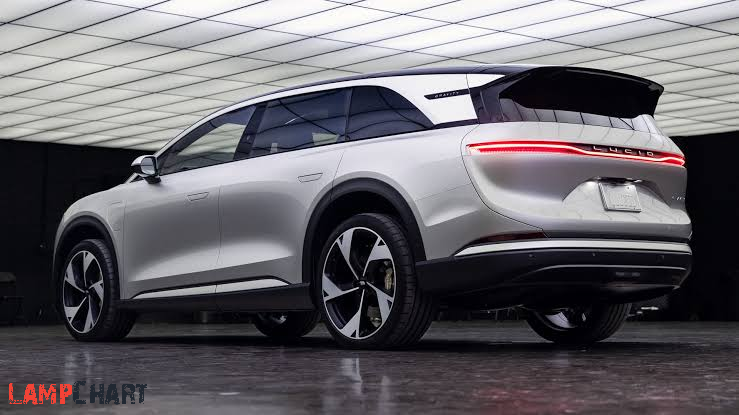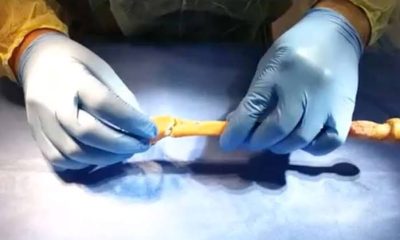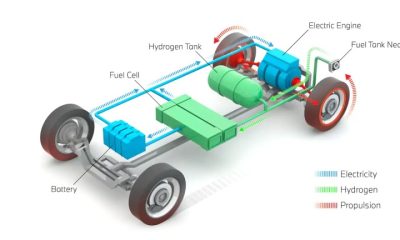Brands
H2Pro; company profile and E-TAC Hydrogen Technology

H2Pro is an Israel startup company that is developing cheaper hydrogen fuel produced by sustainable energy with E-TAC. The company was co-founded in 2019 by Talmon Marco, Gideon Grader, Avner Rothschild, and Hen Dotan. H2Pro has received backing from Microsoft co-founder Bill Gates and from Hong Kong entrepreneur Li Ka-shing. In 2019, Hyundaii invested in H2Pro.
About the Company
H2PRO was founded in 2019 by leading hydrogen experts from the Technion (Israel Institute of Technology). Dr. Hen Dotan, Prof. Gideon Grader and Prof. Avner Rothschild in collaboration with the team that founded Viber, Juno and iMesh.
The company’s mission is to enable the wide scale adoption of sustainable hydrogen fuel by introducing a novel production technology E-TAC.
H2Pro technology is currently under development which expects a commercial, megawatt scale product in 2023. It will be delivered in a container form factor. Their first product will be a 500 kg/day E-TAC electrolyzer, operating at 50 bar. Their first system will produce about 500kg of Hydrogen per day. As E-TAC is a modular system, larger systems – systems with much higher capacities will follow shortly after.
Their first commercial E-TAC systems will consume about 42 kWh per kg of hydrogen produced. They expect E-TAC electrolyzers to cost about 50% less than comparable electrolysis systems, but it’s too early for exact numbers. The company welcomes strategic and institutional investors in their platform.
H2Pro Hydrogen Generation Technology (E-TAC)
E-TAC (Electrochemical, Thermally Activated Chemical) is a revolutionary method for splitting water. Similar to electrolysis, it uses electricity to split water into hydrogen and oxygen. However, unlike conventional electrolysis, hydrogen and oxygen are generated separately in different steps – an Electrochemical (E) step and a Thermally-Activated Chemical (TAC) step.
E-TAC’s membrane-free electrolytic reactors are suitable for high-pressure hydrogen production and cost-efficient scaling. This disruptive process enables the production of green hydrogen in a way that retains high energy efficiency (98.7%HHV) inside the reactors and a 95% system efficiency.
It also finds importance in the areas of affordability, safety, efficiency, high pressure and scale up.
Affordability; E-TAC decouples hydrogen and oxygen evolution reactions into two consecutive steps, ensuring hydrogen and oxygen never mix. This eliminates the need for the most expensive, most delicate part of an electrolyzer – the membrane. As a result, they are simpler and cheaper to make, which means greatly reducing CAPEX. E-TAC supports high pressure hydrogen production (100+ bar), decreasing the need for compressors, further reducing CAPEX and compression related OPEX.
Safety; E-TAC produces hydrogen and oxygen in two consecutive steps, preventing contact between the two gases, thus eliminating the risk of explosive mixing.
Efficiency; Splitting water involves the generation (“evolution”) of both hydrogen and oxygen. Generating oxygen using electricity (electrochemical) is inherently inefficient, resulting in approx. 25% power loss. E-TAC generates oxygen thermally, resulting in almost no power loss. The result is high energy efficiency (98.7%HHV, as opposed to ~75%HHV in conventional water electrolysis).
High pressure and scale up; the lack of a membrane enables high-pressure hydrogen production, potentially exceeding 100 bars (without a compressor).
In addition, the decoupled hydrogen generation electrochemical process and oxygen generation chemical process enable partial-load operation without risk of H₂ /O₂ mixing, making E-TAC water splitting more compatible with renewable power sources such as solar and wind than conventional water electrolysis.
E-TAC water splitting enables green hydrogen production at high pressure (suitable for industrial applications) and high efficiency (> 25% more efficient than conventional water electrolysis). Furthermore, due to the lack of membrane separators in the E-TAC water splitting cells, the technology is relatively easy to scale-up and requires less maintenance than conventional water electrolysis, resulting in significantly reduced CAPEX and OPEX costs.

-

 Brands2 years ago
Brands2 years agoRevBio Tetranite Regenerative Bone Adhesive Actions and Microgravity Technology.
-

 Brands2 years ago
Brands2 years agoBMW ix5 Hydrogen; Features, Release date, Price and specs.
-

 Brands2 years ago
Brands2 years agoBMW i7 All Electric Executive Sedan Features and Price
-

 Brands2 years ago
Brands2 years agoHydrogen Fuel Cell Electric Vehicles FCEVs; Technology and features
-

 Lifestyle2 years ago
Lifestyle2 years agoJeff Bezos; Networth, Career and lifestyle
-

 Brands2 years ago
Brands2 years agoLucid Air; models, specifications, Features, price and range.
-

 Machinery2 years ago
Machinery2 years agoSmall Modular Reactors; Future of Modern Nuclear power generators
-

 Brands2 years ago
Brands2 years agoDodge Charger Daytona SRT EV Concept; Electric muscle car specs, release date and price